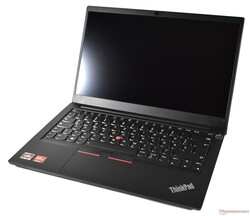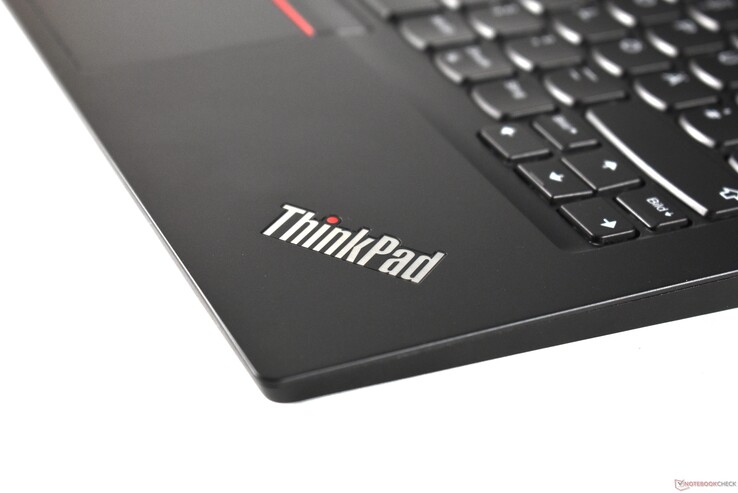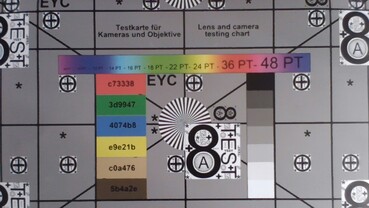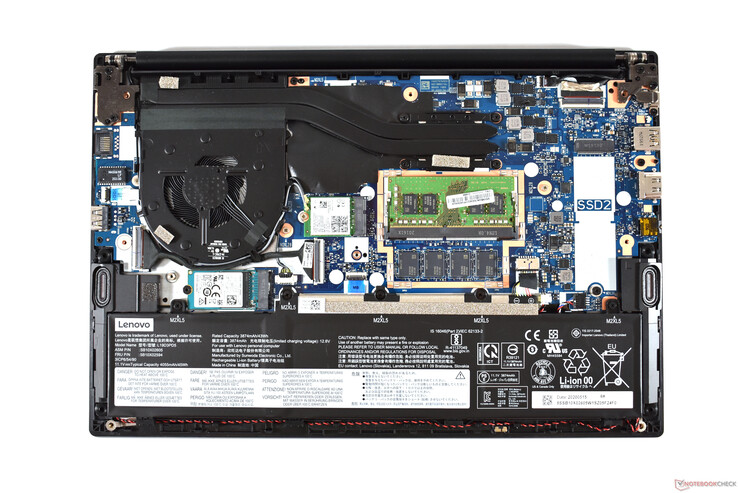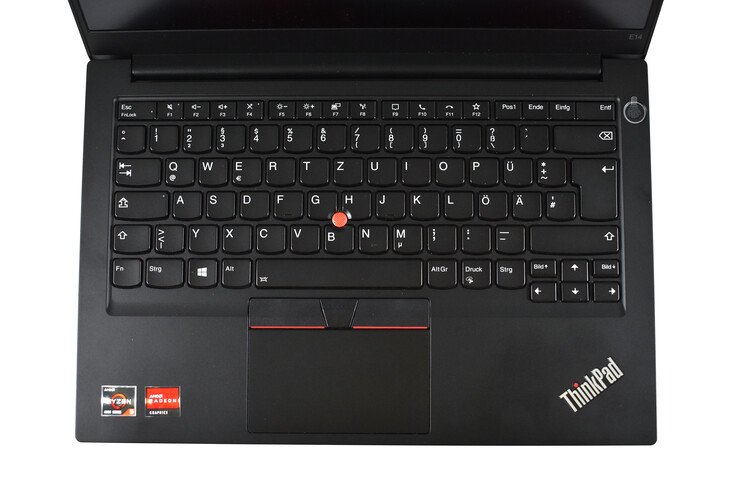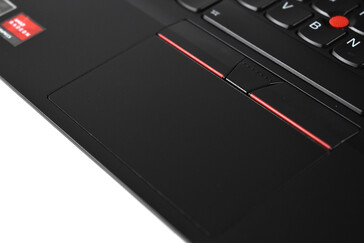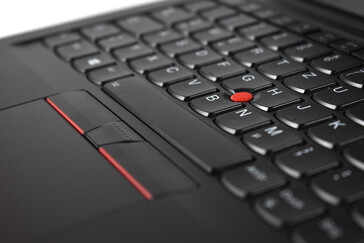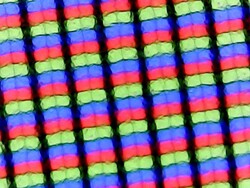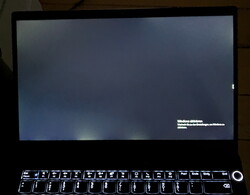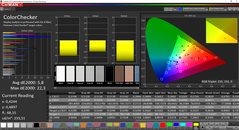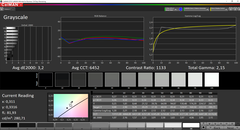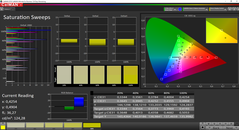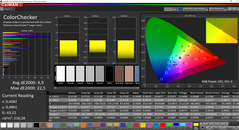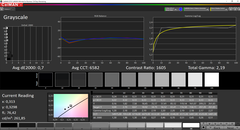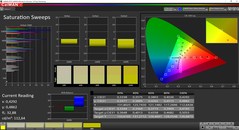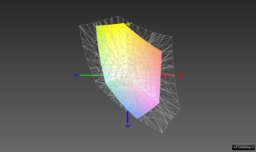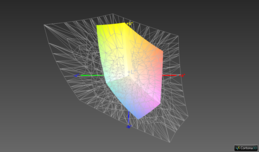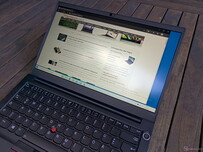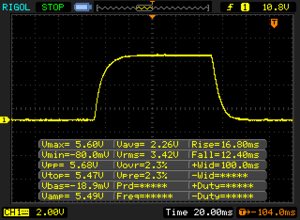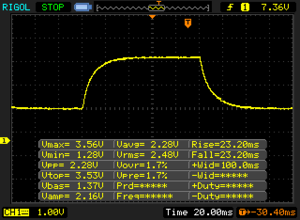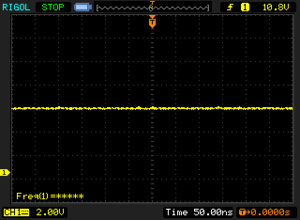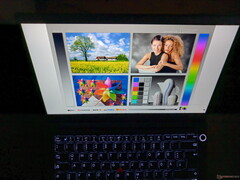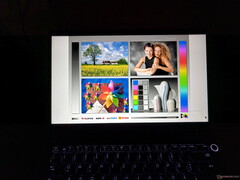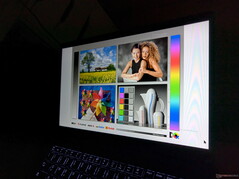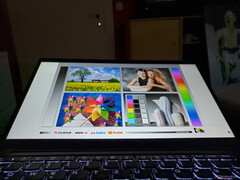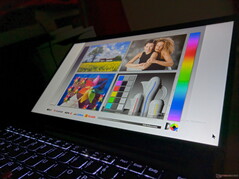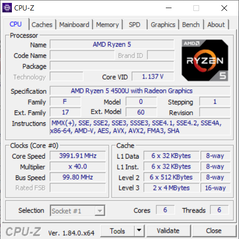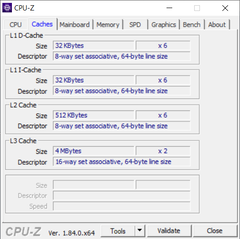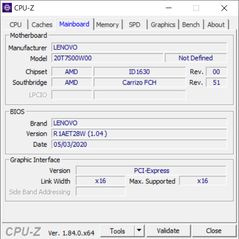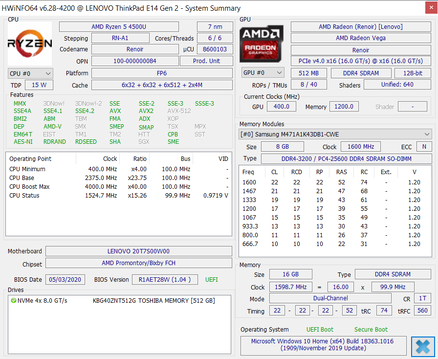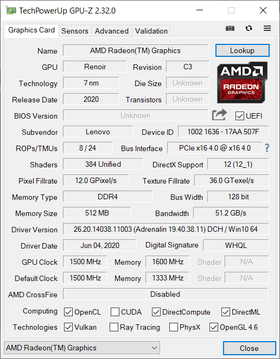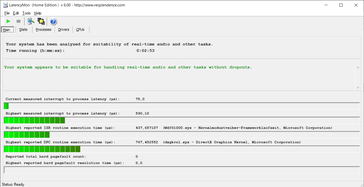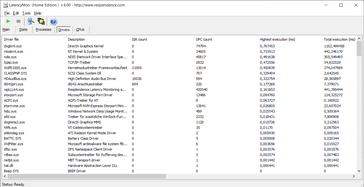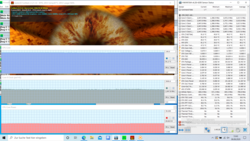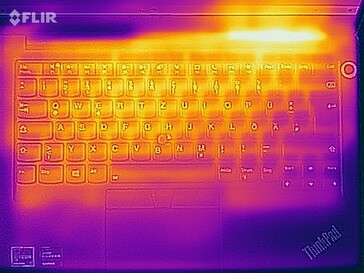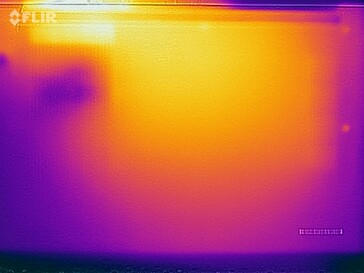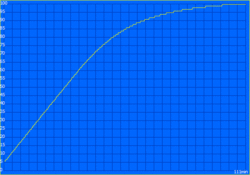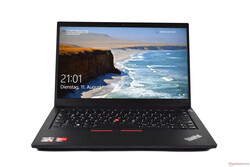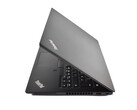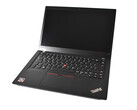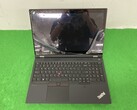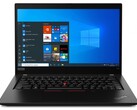Lenovo ThinkPad E14 Gen 2 laptop review: Affordable and fast thanks to AMD Renoir

Laptop designs often have a lifespan of at least two generations. This way, the manufacturer can make enough money to pay-off the product development and there is enough time to develop the successor.
Replacing a new design after a few months is rare. The Lenovo ThinkPad E14 is such a case: At the start of the year, the ThinkPad E14 Gen 1 was released as the successor of the Lenovo ThinkPad E490 with a fresh design. A few months later, this is already passé, since the ThinkPad E14 Gen 2 is a redesign as well.
In terms of its internals, the Lenovo ThinkPad E14 Gen 2 is not really the direct successor to the Gen 1 E14. Our review sample contains the AMD Ryzen 4500U, 16 GB RAM, a 512 GB SSD, and it is only available with AMD CPUs. The E14 Gen 1 on the other hand is Intel exclusive - maybe, there will be a Tiger Lake version later this year.
Our review sample costs 630 Euros (~$750) with exclusive availability in the German Lenovo education program. A similar version for regular customers costs roughly 790 Euros (~$940). For our comparisons, we take the AMD predecessor ThinkPad E495 as well as the ThinkPad E14 Gen 1. Also, we compare the ThinkPad E14 AMD with the HP ProBook 445 G7 and the more expensive ThinkPad T14s.
Rating | Date | Model | Weight | Height | Size | Resolution | Price |
|---|---|---|---|---|---|---|---|
| 85.6 % v7 (old) | 08 / 2020 | Lenovo ThinkPad E14 Gen2-20T7S00W00 R5 4500U, Vega 6 | 1.6 kg | 17.9 mm | 14.00" | 1920x1080 | |
| 84.2 % v7 (old) | 09 / 2019 | Lenovo ThinkPad E495-20NE000JGE R5 3500U, Vega 8 | 1.8 kg | 19.9 mm | 14.00" | 1920x1080 | |
| 84.5 % v7 (old) | 03 / 2020 | Lenovo ThinkPad E14 20RA001MGE i5-10210U, UHD Graphics 620 | 1.6 kg | 17.9 mm | 14.00" | 1920x1080 | |
| 83.2 % v7 (old) | 07 / 2020 | HP ProBook 445 G7 175W4EA R5 4500U, Vega 6 | 1.6 kg | 18 mm | 14.00" | 1920x1080 | |
| 90.5 % v7 (old) | 08 / 2020 | Lenovo ThinkPad T14s-20UJS00K00 R7 PRO 4750U, Vega 7 | 1.3 kg | 16.1 mm | 14.00" | 1920x1080 |
Build quality & design: ThinkPad E14 Gen 2 more compact than the T series
Lenovo has improved the ThinkPad E series over the years. Three to four years ago, the affordable E models were still completely made out of plastic. Their rounded corner design made them look like el-cheapo models, too.
This is not the case with the Lenovo ThinkPad E14 Gen 2. In terms of design, Lenovo has improved the E14 Gen 2 compared with the Gen 1 model by implementing much smaller screen bezels. With the matte-black color and straight, sharp corners, the ThinkPad exudes an aura of seriousness. There is an optical feature that clearly distinguishes the E14 Gen 2 as a 2020 ThinkPad design: The silver Lenovo logo on the lid.
The fit and finish is not extremely far below the more expensive ThinkPads: The backside of the screen (A cover) and bottom (D cover) are made out of black anodized aluminum. The palmrest (C cover) and the screen bezel (B cover) are plastic, with the palmrest sporting a smooth-textured paint. The ThinkPad E14 feels more expensive than it is, though the aluminum surfaces are very smudge-sensitive.
Of course, this still is a budget ThinkPad. There is no magnesium structure frame inside like with the ThinkPad T series and there also is no aluminum unibody-style construction like with the ThinkPad X1 Yoga Gen 5. The aluminum parts of the E14 do increase the stiffness, but they might be susceptible for dents and bending - only long-term usage will tell. Pressure on the back of the screen is passed onto the LCD panel comparably fast, but the keyboard does not flex. There also are variations of the E14 that are completely made out of plastic.
All in all, the Lenovo ThinkPad E14 Gen 2 leaves a very good impression. The wide hinge does not diminish the impression, even if it is less elegant than the small metal hinges of a ThinkPad T14. The hinge of the ThinkPad E14 Gen 2 has a firm grip on the screen and enables an opening angle of 180°. Opening the screen with one hand is possible as well.
One priority of the redesign seems to have been reducing the length of the chassis. The ThinkPad E14 is now shorter and more compact than before and the "chin" beneath the screen is much smaller. The ThinkPad E14 Gen 2 is nearly as compact as the premium model X1 Carbon Gen 8 and more compact than the more-expensive Lenovo ThinkPad T14s.
The thickness of the E ThinkPad differentiates it as a cheaper model and even more so the weight: At 1.6 kg, it is slightly lighter than the direct AMD predecessor ThinkPad E495, but the X1 Carbon and T14s play in a completely different weight league. The direct competitor from HP roughly weighs the same as the E14 AMD.
Connectivity: Spartan Lenovo laptop with only one USB C port & USB 2.0
Compared with the ThinkPad E495, the microSD slot has been removed and there is now a trap-door on the Ethernet port. Otherwise, the port selection of the ThinkPad E14 AMD is still as restrictive as before. The biggest problems: There is only a single USB C port (without Thunderbolt), which must be used for charging the laptop, and the USB port on the right only supports USB 2.0 speed. This was not okay in 2019 and is not better in 2020. Also, the HDMI port is only based on the standard 1.4b instead of HDMI 2.0 like with the more expensive Ryzen 4000 ThinkPads. All in all, the port selection is serviceable, but it is clearly a victim of cost-cutting.
Communication
The Intel Wireless AX200 (2x2) is an improvement compared with the solution used in the ThinkPad E495. The Intel model ThinkPad E14 Gen 1 had the newer AX201, but the E14 Gen 2 still outperformed it in the benchmarks.
Webcam
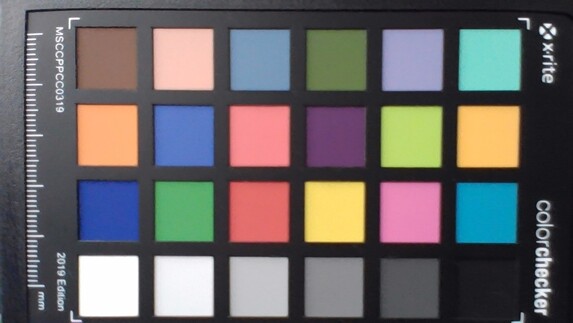
Security
The security features of the small business line are traditionally rudimentary. At least there is an infrared-camera for Windows Hello and the ThinkShutter on-board now. The fingerprint-reader is integrated into the power button, and there is no smartcard reader.
Accessories
Apart from the 65 W charger, there are no other accessories supplied with the laptop.
Maintenance
Lenovo uses the well-known design of a big bottom plate that is secured with screws and clips. Opening the clips can be nerve-wrecking, as breaking them is easy. Upgrades and maintenance work should be bundled, to avoid having to remove the bottom cover as much as possible.
Once this road-block is out of the way, the battery can be exchanged, the fan can be cleaned and the RAM upgraded. There is a free RAM slot, a Wi-Fi module and two M.2 slots (1x M.2 2280, 1x M.2 2242). The M.2 2280 port is free ex-factory. For the extra M.2 port, Lenovo has removed the 2.5-inch option.
The keyboard is not easily exchangeable anymore, which is different from the ThinkPad E495. It is directly integrated into the palmrest.
Warranty
This unit of the Lenovo ThinkPad E14 Gen 2 comes with a 24-month warranty. A pickup and return service is included, which means the laptop will be picked up in the case of a defect. There are many upgrades available: Up to five years of warranty, a prolonged battery warranty, onsite-service, accidental damage protection, and Premier support.
Input devices: ThinkPad E14 AMD with backlight for the first time
Keyboard
For every ThinkPad, the keyboard is one of the most important components. ThinkPads are still known for their input devices, even though Lenovo has changed the layout and design throughout the years.
The keyboard of the E14 Gen 2 is a full-size unit with 1.8 mm travel, which creates a very comfortable typing experience. The pressure point is neither too soft nor too hard and the keys have exactly the right amount of resistance. They have a slightly rough surface and the keyboard has two levels of LED backlight. The direct AMD predecessor ThinkPad E495 does not have this feature.
Touchpad & TrackPoint
The touchpad measures 10 x 5.6 cm, which means it is shorter than the ThinkPad E495, probably because of the reduced chassis length. Like all ThinkPads apart from the X1 series, the touchpad is made out of smooth plastic. It is not as high-quality or friction-free as a glass touchpad, but there are no other real problems with it. The integrated mechanism makes this a ClickPad. The click mechanism is dampened and quiet. Together with the Microsoft Precision driver, the trackpad is a good one.
Alternatively, there is the red TrackPoint. In the E14 AMD, the TrackPoint is made by ELAN. The small, fixed joystick lets users manipulate the mouse-cursor more quickly and precisely, as users do not have to remove their hands from the keyboard to use it. The three keys between the keyboard and touchpad belong to the TrackPoint. They are made out of plastic and offer a crisp pressure point. The middle key emulates a scrollwheel. Without gestures, the TrackPoint cannot offer the completely functionality of a trackpad, but especially when working with the keyboard or in small-space situations (such as trains and planes), we prefer the pointing stick.
Screens remains a weak point of the ThinkPad E14 AMD
Diagonally, the matte LCD screen of the ThinkPad E14 Gen 2 still measures 14 inches (16:9). There is a change compared with the ThinkPad E495: The HD option (1366x768) is no more; instead there are only FHD (1920x1080) screens. Careful: There is a TN model with 220 cd/m² as well as an IPS option with 250 cd/m², which is used in our review unit. No touch-options are available.
The screen beats the specified brightness with an average of 264 cd/m². Even so, this is still a dark screen by current standards, especially compared with the low power LCD of the Lenovo ThinkPad T14s. It is obvious that Lenovo uses the LCD brightness to differentiate the T series from the lower-end models.
| |||||||||||||||||||||||||
Brightness Distribution: 87 %
Center on Battery: 281 cd/m²
Contrast: 1124:1 (Black: 0.25 cd/m²)
ΔE ColorChecker Calman: 5.8 | ∀{0.5-29.43 Ø4.77}
calibrated: 4.9
ΔE Greyscale Calman: 3.2 | ∀{0.09-98 Ø5}
56.9% sRGB (Argyll 1.6.3 3D)
36.2% AdobeRGB 1998 (Argyll 1.6.3 3D)
39.42% AdobeRGB 1998 (Argyll 3D)
57.2% sRGB (Argyll 3D)
38.16% Display P3 (Argyll 3D)
Gamma: 2.15
CCT: 6452 K
| Lenovo ThinkPad E14 Gen2-20T7S00W00 B140HAN05.7, a-Si IPS LED, 1920x1080, 14" | Lenovo ThinkPad E495-20NE000JGE N140HCA-EAC, IPS, 1920x1080, 14" | Lenovo ThinkPad E14 20RA001MGE NV140FHM-N48, IPS LED, 1920x1080, 14" | HP ProBook 445 G7 175W4EA BOE0868, IPS, 1920x1080, 14" | Lenovo ThinkPad T14s-20UJS00K00 N140HCG-GQ2, IPS , 1920x1080, 14" | |
|---|---|---|---|---|---|
| Display | 11% | 6% | 5% | 74% | |
| Display P3 Coverage (%) | 38.16 | 42.37 11% | 40.31 6% | 39.92 5% | 66.8 75% |
| sRGB Coverage (%) | 57.2 | 63.5 11% | 60 5% | 59.6 4% | 97.9 71% |
| AdobeRGB 1998 Coverage (%) | 39.42 | 43.8 11% | 41.65 6% | 41.25 5% | 69 75% |
| Response Times | -1% | -28% | 2% | 37% | |
| Response Time Grey 50% / Grey 80% * (ms) | 46.4 ? | 40.8 ? 12% | 52 ? -12% | 40 ? 14% | 32.4 ? 30% |
| Response Time Black / White * (ms) | 27.2 ? | 30.8 ? -13% | 39.2 ? -44% | 30 ? -10% | 15.2 ? 44% |
| PWM Frequency (Hz) | 25000 ? | 1250 ? | 192 ? | 26040 ? | |
| Screen | 9% | 10% | -4% | 45% | |
| Brightness middle (cd/m²) | 281 | 241 -14% | 305 9% | 277 -1% | 404 44% |
| Brightness (cd/m²) | 264 | 230 -13% | 292 11% | 270 2% | 371 41% |
| Brightness Distribution (%) | 87 | 75 -14% | 89 2% | 88 1% | 88 1% |
| Black Level * (cd/m²) | 0.25 | 0.17 32% | 0.17 32% | 0.285 -14% | 0.34 -36% |
| Contrast (:1) | 1124 | 1418 26% | 1794 60% | 972 -14% | 1188 6% |
| Colorchecker dE 2000 * | 5.8 | 4.7 19% | 5.9 -2% | 5.53 5% | 1.4 76% |
| Colorchecker dE 2000 max. * | 22.3 | 19.7 12% | 18.4 17% | 10.68 52% | 3.2 86% |
| Colorchecker dE 2000 calibrated * | 4.9 | 4.2 14% | 4.6 6% | 4.43 10% | 0.8 84% |
| Greyscale dE 2000 * | 3.2 | 2.6 19% | 4.4 -38% | 6.2 -94% | 1.6 50% |
| Gamma | 2.15 102% | 2.12 104% | 2.05 107% | 2.34 94% | 2.13 103% |
| CCT | 6452 101% | 6507 100% | 6921 94% | 7342 89% | 6480 100% |
| Color Space (Percent of AdobeRGB 1998) (%) | 36.2 | 40.3 11% | 38.2 6% | 38 5% | 63 74% |
| Color Space (Percent of sRGB) (%) | 56.9 | 63.3 11% | 59.6 5% | 59 4% | 97.9 72% |
| Total Average (Program / Settings) | 6% /
8% | -4% /
4% | 1% /
-2% | 52% /
50% |
* ... smaller is better
We measured the AUO panel with CalMAN and the X-Rite i1Pro 2. The deviations in color ex-factory are not huge, but there is some room for improvement. The contrast of 1124:1 is good, but it is not great.
On the other hand, the color gamut of just 56.9% of sRGB is catastrophically bad. This panel cannot be used for serious photo-editing, as many colors are simply displayed wrong. This also makes the colors look dull.
Display Response Times
| ↔ Response Time Black to White | ||
|---|---|---|
| 27.2 ms ... rise ↗ and fall ↘ combined | ↗ 16.8 ms rise | |
| ↘ 12.4 ms fall | ||
| The screen shows relatively slow response rates in our tests and may be too slow for gamers. In comparison, all tested devices range from 0.1 (minimum) to 240 (maximum) ms. » 68 % of all devices are better. This means that the measured response time is worse than the average of all tested devices (20.2 ms). | ||
| ↔ Response Time 50% Grey to 80% Grey | ||
| 46.4 ms ... rise ↗ and fall ↘ combined | ↗ 23.2 ms rise | |
| ↘ 23.2 ms fall | ||
| The screen shows slow response rates in our tests and will be unsatisfactory for gamers. In comparison, all tested devices range from 0.165 (minimum) to 636 (maximum) ms. » 80 % of all devices are better. This means that the measured response time is worse than the average of all tested devices (31.6 ms). | ||
Screen Flickering / PWM (Pulse-Width Modulation)
| Screen flickering / PWM not detected | |||
In comparison: 53 % of all tested devices do not use PWM to dim the display. If PWM was detected, an average of 8080 (minimum: 5 - maximum: 343500) Hz was measured. | |||
Performance: AMD Ryzen 5 4500U with a respectable result
The choice of the available AMD Ryzen CPUs covers the AMD Ryzen 3 4300U, the Ryzen 5 4500U to the Ryzen 7 4700U, and finally the Ryzen 7 4800U. The Ryzen 7 4800U, however, is not available at the moment. Depending on the CPU, there also are different integrated Radeon GPUs, with the AMD Radeon RX Vega 8 as the top option.
The RAM configuration has changed compared with the ThinkPad E495 (2x SO-DIMM) and the ThinkPad E14 Gen 1 (1x SO-DIMM): The Lenovo ThinkPad E14 Gen 2 has a single DDR4-3200 SO-DIMM and 4 GB to 8 GB on-board memory. This allows the memory to run in dual-channel, which was not the case with the Intel E14. The memory can be upgraded to 40 GB on the models with 8 GB soldered RAM.
Processor
The AMD Ryzen 5 4500U is the first hexa-core processor used in Lenovo ThinkPad E. The six cores have clock-rates of 2.3 to 4 GHz. This CPU does not have Hyper-Threading. Our CPU comparison list enables comparisons with other CPUs.
In terms of the CPU performance, the ThinkPad E14 Gen 2 clearly beat out the ThinkPad E14 with Intel CPUs. In the Cinebench multicore test, it is 60% faster. The ThinkPad E495 is also clearly slower. Compared with the HP ProBook 445 G7, the ThinkPad E14 Gen 2 wins the comparison under prolonged load in the Cinebench loop, as the ThinkPad shows no signs of throttling.
We did not find any performance limitation in battery mode.
Cinebench R20: CPU (Multi Core) | CPU (Single Core)
Blender: v2.79 BMW27 CPU
7-Zip 18.03: 7z b 4 -mmt1 | 7z b 4
Geekbench 5.5: Single-Core | Multi-Core
HWBOT x265 Benchmark v2.2: 4k Preset
LibreOffice : 20 Documents To PDF
R Benchmark 2.5: Overall mean
| Cinebench R15 / CPU Multi 64Bit | |
| Average of class Office (246 - 3380, n=82, last 2 years) | |
| Lenovo ThinkPad T14s-20UJS00K00 | |
| Average AMD Ryzen 5 4500U (715 - 1007, n=18) | |
| HP ProBook 445 G7 175W4EA | |
| Lenovo ThinkPad E14 Gen2-20T7S00W00 | |
| Lenovo ThinkPad E495-20NE000JGE | |
| Lenovo ThinkPad E14 20RA001MGE | |
| Cinebench R15 / CPU Single 64Bit | |
| Average of class Office (99.5 - 312, n=82, last 2 years) | |
| Lenovo ThinkPad T14s-20UJS00K00 | |
| Lenovo ThinkPad E14 Gen2-20T7S00W00 | |
| HP ProBook 445 G7 175W4EA | |
| Average AMD Ryzen 5 4500U (156 - 177, n=13) | |
| Lenovo ThinkPad E14 20RA001MGE | |
| Lenovo ThinkPad E495-20NE000JGE | |
| Cinebench R20 / CPU (Multi Core) | |
| Average of class Office (590 - 8840, n=80, last 2 years) | |
| Lenovo ThinkPad T14s-20UJS00K00 | |
| Average AMD Ryzen 5 4500U (1843 - 2530, n=13) | |
| HP ProBook 445 G7 175W4EA | |
| Lenovo ThinkPad E14 Gen2-20T7S00W00 | |
| Lenovo ThinkPad E495-20NE000JGE | |
| Lenovo ThinkPad E14 20RA001MGE | |
| Cinebench R20 / CPU (Single Core) | |
| Average of class Office (285 - 815, n=80, last 2 years) | |
| Lenovo ThinkPad T14s-20UJS00K00 | |
| HP ProBook 445 G7 175W4EA | |
| Lenovo ThinkPad E14 Gen2-20T7S00W00 | |
| Average AMD Ryzen 5 4500U (424 - 453, n=12) | |
| Lenovo ThinkPad E14 20RA001MGE | |
| Lenovo ThinkPad E495-20NE000JGE | |
| Blender / v2.79 BMW27 CPU | |
| Lenovo ThinkPad E14 20RA001MGE | |
| Lenovo ThinkPad E495-20NE000JGE | |
| HP ProBook 445 G7 175W4EA | |
| Average AMD Ryzen 5 4500U (533 - 748, n=11) | |
| Lenovo ThinkPad E14 Gen2-20T7S00W00 | |
| Average of class Office (158 - 1956, n=83, last 2 years) | |
| Lenovo ThinkPad T14s-20UJS00K00 | |
| 7-Zip 18.03 / 7z b 4 -mmt1 | |
| Average of class Office (3046 - 6497, n=82, last 2 years) | |
| Lenovo ThinkPad T14s-20UJS00K00 | |
| HP ProBook 445 G7 175W4EA | |
| Average AMD Ryzen 5 4500U (4235 - 4338, n=11) | |
| Lenovo ThinkPad E14 Gen2-20T7S00W00 | |
| Lenovo ThinkPad E14 20RA001MGE | |
| Lenovo ThinkPad E495-20NE000JGE | |
| 7-Zip 18.03 / 7z b 4 | |
| Average of class Office (7532 - 76886, n=83, last 2 years) | |
| Lenovo ThinkPad T14s-20UJS00K00 | |
| Average AMD Ryzen 5 4500U (22466 - 25891, n=11) | |
| Lenovo ThinkPad E14 Gen2-20T7S00W00 | |
| HP ProBook 445 G7 175W4EA | |
| Lenovo ThinkPad E495-20NE000JGE | |
| Lenovo ThinkPad E14 20RA001MGE | |
| Geekbench 5.5 / Single-Core | |
| Average of class Office (811 - 2128, n=79, last 2 years) | |
| Lenovo ThinkPad T14s-20UJS00K00 | |
| Average AMD Ryzen 5 4500U (1082 - 1220, n=10) | |
| Lenovo ThinkPad E14 Gen2-20T7S00W00 | |
| HP ProBook 445 G7 175W4EA | |
| Lenovo ThinkPad E14 20RA001MGE | |
| Geekbench 5.5 / Multi-Core | |
| Average of class Office (1719 - 16999, n=79, last 2 years) | |
| Lenovo ThinkPad T14s-20UJS00K00 | |
| Average AMD Ryzen 5 4500U (4352 - 6234, n=10) | |
| Lenovo ThinkPad E14 Gen2-20T7S00W00 | |
| HP ProBook 445 G7 175W4EA | |
| Lenovo ThinkPad E14 20RA001MGE | |
| HWBOT x265 Benchmark v2.2 / 4k Preset | |
| Average of class Office (1.72 - 26, n=81, last 2 years) | |
| Lenovo ThinkPad T14s-20UJS00K00 | |
| Lenovo ThinkPad E14 Gen2-20T7S00W00 | |
| Average AMD Ryzen 5 4500U (5.86 - 7.33, n=10) | |
| Lenovo ThinkPad E14 20RA001MGE | |
| Lenovo ThinkPad E495-20NE000JGE | |
| LibreOffice / 20 Documents To PDF | |
| HP ProBook 445 G7 175W4EA | |
| Average AMD Ryzen 5 4500U (58.2 - 78, n=11) | |
| Lenovo ThinkPad E14 Gen2-20T7S00W00 | |
| Lenovo ThinkPad T14s-20UJS00K00 | |
| Average of class Office (41.5 - 129.6, n=81, last 2 years) | |
| R Benchmark 2.5 / Overall mean | |
| Lenovo ThinkPad E14 20RA001MGE | |
| Lenovo ThinkPad E14 Gen2-20T7S00W00 | |
| Average AMD Ryzen 5 4500U (0.614 - 0.654, n=10) | |
| Lenovo ThinkPad T14s-20UJS00K00 | |
| Average of class Office (0.4098 - 1.06, n=81, last 2 years) | |
* ... smaller is better
System performance
We cannot complain about the system performance of the ThinkPad E14 Gen 2, which is also true for the PCMark benchmarks.
| PCMark 8 Home Score Accelerated v2 | 4223 points | |
| PCMark 8 Work Score Accelerated v2 | 5414 points | |
| PCMark 10 Score | 4433 points | |
Help | ||
| DPC Latencies / LatencyMon - interrupt to process latency (max), Web, Youtube, Prime95 | |
| Lenovo ThinkPad E14 Gen2-20T7S00W00 | |
* ... smaller is better
Storage
There is no 2.5-inch bay in the Lenovo ThinkPad E14 Gen 2. Instead, there are two M.2 slots: A M.2 2242 and a M.2 2280 slot. In our review unit, only the 2242 slot houses an SSD; the bigger slot is open for an upgrade. The Toshiba SSD with a capacity of 512 GB used here is fast, though there are faster PCIe NVMe SSDs on the market.
| Lenovo ThinkPad E14 Gen2-20T7S00W00 Toshiba BG4 KBG40ZNT512G | Lenovo ThinkPad E495-20NE000JGE SK hynix BC501 HFM256GDHTNG | Lenovo ThinkPad E14 20RA001MGE SK hynix BC501 HFM512GDHTNG-8310A | HP ProBook 445 G7 175W4EA Samsung PM991 MZVLQ512HALU | Lenovo ThinkPad T14s-20UJS00K00 WDC PC SN730 SDBPNTY-1T00 | Average Toshiba BG4 KBG40ZNT512G | |
|---|---|---|---|---|---|---|
| CrystalDiskMark 5.2 / 6 | -19% | -3% | 2% | 33% | 2% | |
| Write 4K (MB/s) | 102.3 | 121.3 19% | 121.9 19% | 144.6 41% | 108 6% | 133.9 ? 31% |
| Read 4K (MB/s) | 32.12 | 41.24 28% | 42.66 33% | 38.08 19% | 39.82 24% | 40.4 ? 26% |
| Write Seq (MB/s) | 1518 | 814 -46% | 628 -59% | 1320 -13% | 2028 34% | 1212 ? -20% |
| Read Seq (MB/s) | 1501 | 1098 -27% | 1193 -21% | 1397 -7% | 1826 22% | 1372 ? -9% |
| Write 4K Q32T1 (MB/s) | 356.4 | 267 -25% | 590 66% | 324.2 -9% | 570 60% | 338 ? -5% |
| Read 4K Q32T1 (MB/s) | 459.6 | 334.6 -27% | 414.5 -10% | 434.8 -5% | 401.5 -13% | 491 ? 7% |
| Write Seq Q32T1 (MB/s) | 1507 | 819 -46% | 866 -43% | 1382 -8% | 3091 105% | 1343 ? -11% |
| Read Seq Q32T1 (MB/s) | 2327 | 1646 -29% | 2078 -11% | 2354 1% | 2872 23% | 2279 ? -2% |
Continuous read: DiskSpd Read Loop, Queue Depth 8
GPU
The AMD Radeon RX Vega 6 is a mid-level solution among the recent integrated AMD GPUs. It has 384 shader units with clock-rates of up to 1500 MHz. Our GPU comparison list is useful for comparing it with other GPUs.
In the benchmarks, the AMD Radeon RX Vega 7 of the ThinkPad T14s is clearly faster. The GPU of the E495 on the other hand is clearly slower, and the Intel UHD Graphics 620 in the ThinkPad E14 Gen 1 is even 60% slower. This pronounced difference might be partially caused by the single-channel RAM in the E14 Gen 1. After all, the ThinkPad E14 Gen 2 has dual-channel memory.
The GPU was able to realize its full potential in battery mode as well.
| 3DMark 11 Performance | 4640 points | |
| 3DMark Cloud Gate Standard Score | 14756 points | |
| 3DMark Fire Strike Score | 2537 points | |
| 3DMark Time Spy Score | 931 points | |
Help | ||
Gaming performance
Different from the Intel UHD Graphics 620, the AMD Radeon RX Vega 6 is fast enough for games. Of course, the graphics settings and the resolution still have to be reduced quite a lot in recent, demanding titles.
| low | med. | high | ultra | |
|---|---|---|---|---|
| The Witcher 3 (2015) | 52.7 | 16.1 | ||
| Dota 2 Reborn (2015) | 98.2 | 79 | 44.4 | 41.8 |
| X-Plane 11.11 (2018) | 40.8 | 30.4 | 27.5 | |
| Shadow of the Tomb Raider (2018) | 43.8 | 15.8 | ||
| Total War: Three Kingdoms (2019) | 48.7 | 14.6 |
Emissions: Lenovo laptop is quiet, but not really cool
Noise
While idling, the fans of the Lenovo laptop luckily stay completely quiet. Under load, the active cooling of the ThinkPad E14 Gen 2 operates at 31.7 to 32.7 dB(a). This is still pretty quiet and not at all annoying.
We were able to detect some coil-whine with the ThinkPad E14 AMD. But it was only audible when holding an ear directly to the keyboard.
Noise level
| Idle |
| 29.1 / 29.1 / 29.1 dB(A) |
| Load |
| 31.7 / 32.7 dB(A) |
 | ||
30 dB silent 40 dB(A) audible 50 dB(A) loud |
||
min: | ||
Temperatures
Unfortunately, the ThinkPad E14 Gen 2 does have somewhat of a heat problem. The maximum temperature of 48.1 °C is not critical, but the unit does get warm in all parts of the chassis. This applies to the palmrest as well, which can get noticeably warm.
The stress test produces the following result: The processor can keep up its clock-rates at 3 GHz and consume 25 W under sustained load. This is the reason for the rather high chassis temperatures, as the CPU temperatures stay at roughly 90 °C under load.
(-) The maximum temperature on the upper side is 47.1 °C / 117 F, compared to the average of 34.3 °C / 94 F, ranging from 21.2 to 62.5 °C for the class Office.
(-) The bottom heats up to a maximum of 48.1 °C / 119 F, compared to the average of 36.8 °C / 98 F
(+) In idle usage, the average temperature for the upper side is 24.9 °C / 77 F, compared to the device average of 29.5 °C / 85 F.
(±) The palmrests and touchpad can get very hot to the touch with a maximum of 38.5 °C / 101.3 F.
(-) The average temperature of the palmrest area of similar devices was 27.6 °C / 81.7 F (-10.9 °C / -19.6 F).
Speakers
The stereo speakers with Harman branding do not disappoint: They are adequately loud for laptop speakers and even provide a little bit of bass. The ThinkPad E14 Gen 2 has better speakers than the ThinkPad E495 or the ProBook 445 G7.
What they cannot do is compete with an external solution though, as the combo-audio port still produces better results.
Lenovo ThinkPad E14 Gen2-20T7S00W00 audio analysis
(±) | speaker loudness is average but good (74.1 dB)
Bass 100 - 315 Hz
(±) | reduced bass - on average 13.5% lower than median
(±) | linearity of bass is average (13.6% delta to prev. frequency)
Mids 400 - 2000 Hz
(+) | balanced mids - only 3.6% away from median
(+) | mids are linear (5.1% delta to prev. frequency)
Highs 2 - 16 kHz
(+) | balanced highs - only 4.4% away from median
(±) | linearity of highs is average (7.8% delta to prev. frequency)
Overall 100 - 16.000 Hz
(±) | linearity of overall sound is average (20.3% difference to median)
Compared to same class
» 43% of all tested devices in this class were better, 10% similar, 47% worse
» The best had a delta of 7%, average was 21%, worst was 53%
Compared to all devices tested
» 52% of all tested devices were better, 8% similar, 40% worse
» The best had a delta of 4%, average was 24%, worst was 134%
HP ProBook 445 G7 175W4EA audio analysis
(±) | speaker loudness is average but good (76.8 dB)
Bass 100 - 315 Hz
(-) | nearly no bass - on average 25.1% lower than median
(±) | linearity of bass is average (9.5% delta to prev. frequency)
Mids 400 - 2000 Hz
(+) | balanced mids - only 3.1% away from median
(±) | linearity of mids is average (9% delta to prev. frequency)
Highs 2 - 16 kHz
(+) | balanced highs - only 4.8% away from median
(+) | highs are linear (5.7% delta to prev. frequency)
Overall 100 - 16.000 Hz
(±) | linearity of overall sound is average (19.8% difference to median)
Compared to same class
» 40% of all tested devices in this class were better, 9% similar, 51% worse
» The best had a delta of 7%, average was 21%, worst was 53%
Compared to all devices tested
» 50% of all tested devices were better, 7% similar, 43% worse
» The best had a delta of 4%, average was 24%, worst was 134%
Lenovo ThinkPad E495-20NE000JGE audio analysis
(-) | not very loud speakers (70.4 dB)
Bass 100 - 315 Hz
(-) | nearly no bass - on average 15.9% lower than median
(±) | linearity of bass is average (11.7% delta to prev. frequency)
Mids 400 - 2000 Hz
(+) | balanced mids - only 3.6% away from median
(±) | linearity of mids is average (7.3% delta to prev. frequency)
Highs 2 - 16 kHz
(+) | balanced highs - only 1.9% away from median
(±) | linearity of highs is average (7.1% delta to prev. frequency)
Overall 100 - 16.000 Hz
(±) | linearity of overall sound is average (20.3% difference to median)
Compared to same class
» 43% of all tested devices in this class were better, 10% similar, 47% worse
» The best had a delta of 7%, average was 21%, worst was 53%
Compared to all devices tested
» 52% of all tested devices were better, 8% similar, 40% worse
» The best had a delta of 4%, average was 24%, worst was 134%
Power management: Lenovo E14 Gen 2 with weaknesses
Power consumption
Recent Ryzen 4000 ThinkPads consume more energy than their predecessors or Intel counterparts. Unfortunately, this is especially true while idling. Only the ThinkPad T14s with the Ryzen 7 Pro is worse, while the ProBook 445 G7 runs more efficiently with the same CPU.
For the 65 W charger, the maximum power consumption of 50 W is no challenge.
| Off / Standby | |
| Idle | |
| Load |
|
Key:
min: | |
| Lenovo ThinkPad E14 Gen2-20T7S00W00 R5 4500U, Vega 6, Toshiba BG4 KBG40ZNT512G, a-Si IPS LED, 1920x1080, 14" | Lenovo ThinkPad E495-20NE000JGE R5 3500U, Vega 8, SK hynix BC501 HFM256GDHTNG, IPS, 1920x1080, 14" | Lenovo ThinkPad E14 20RA001MGE i5-10210U, UHD Graphics 620, SK hynix BC501 HFM512GDHTNG-8310A, IPS LED, 1920x1080, 14" | HP ProBook 445 G7 175W4EA R5 4500U, Vega 6, Samsung PM991 MZVLQ512HALU, IPS, 1920x1080, 14" | Lenovo ThinkPad T14s-20UJS00K00 R7 PRO 4750U, Vega 7, WDC PC SN730 SDBPNTY-1T00, IPS , 1920x1080, 14" | Average AMD Radeon RX Vega 6 (Ryzen 4000/5000) | Average of class Office | |
|---|---|---|---|---|---|---|---|
| Power Consumption | 18% | 18% | 17% | -6% | 9% | -5% | |
| Idle Minimum * (Watt) | 4.6 | 4.1 11% | 3.01 35% | 3.5 24% | 5.7 -24% | 3.98 ? 13% | 4.5 ? 2% |
| Idle Average * (Watt) | 7.6 | 5.86 23% | 6.32 17% | 6.2 18% | 8.9 -17% | 6.53 ? 14% | 7.47 ? 2% |
| Idle Maximum * (Watt) | 9.7 | 6.36 34% | 8.78 9% | 8.8 9% | 11 -13% | 8.65 ? 11% | 8.85 ? 9% |
| Load Average * (Watt) | 39.1 | 30.4 22% | 32.5 17% | 30 23% | 38.2 2% | 35 ? 10% | 42.8 ? -9% |
| Load Maximum * (Watt) | 50.3 | 50 1% | 45.5 10% | 45 11% | 40.2 20% | 51.5 ? -2% | 64.5 ? -28% |
* ... smaller is better
Battery life
While most aspects of the Lenovo ThinkPad E14 Gen 2 have been reworked, the capacity of the internal 45 Wh battery remains unchanged.
Interestingly, the Wi-Fi battery life (150 cd/m² brightness) is about as good as it was for the ThinkPad E495, despite the higher power consumption. Maybe, the new Edge browser is simply more power efficient. The ThinkPad E14 Gen 2 delivers middling battery life overall, though it will probably be enough for most users.
| Lenovo ThinkPad E14 Gen2-20T7S00W00 R5 4500U, Vega 6, 45 Wh | Lenovo ThinkPad E495-20NE000JGE R5 3500U, Vega 8, 45 Wh | Lenovo ThinkPad E14 20RA001MGE i5-10210U, UHD Graphics 620, 45 Wh | HP ProBook 445 G7 175W4EA R5 4500U, Vega 6, 45 Wh | Lenovo ThinkPad T14s-20UJS00K00 R7 PRO 4750U, Vega 7, 57 Wh | Average of class Office | |
|---|---|---|---|---|---|---|
| Battery runtime | 22% | 35% | 42% | 67% | 73% | |
| H.264 (h) | 9.1 | 7.9 -13% | 10.3 13% | 13.2 45% | 14.9 ? 64% | |
| WiFi v1.3 (h) | 8.3 | 8.3 0% | 8.5 2% | 8.7 5% | 10.2 23% | 12.5 ? 51% |
| Load (h) | 0.9 | 1.6 78% | 1.7 89% | 1.6 78% | 2.1 133% | 1.823 ? 103% |
Pros
Cons
Verdict
Lenovo made a mistake with the ThinkPad E14 Gen 1: Downgrade the memory to single-channel for a thinner chassis. The Lenovo ThinkPad E14 Gen 2 corrects this mistake. At the same time, if offers the best performance of any E ThinkPad until now, thanks to AMD Ryzen 4000.
With that in mind, the ThinkPad E series of course remains a budget-oriented laptop series. This explains the relatively dark and color-weak display, the missing microSD slot and the cheapened port selection. ThinkPads of the L and T series have advantages here, and the same goes for the available business features. Also, the ThinkPad E14 Gen 2 does heat up around the palmrest under load, and the materials used here make the chassis heavy and the battery life could be better.
ThinkPad input devices, AMD Ryzen 4000 and affordable: If one seeks out this combination the ThinkPad E14 Gen 2 could be the ideal choice for a home-office laptop - though Lenovo's cost-cuts might be deal-breakers for some users.
If you are willing to lower your expectations for the screen and port selection, the Lenovo ThinkPad E14 Gen 2 can still be attractive. The very good input devices, compact chassis and quiet fan are all desirable attributes. The E14 AMD is pretty upgradable as well, and with AMD Renoir it has a great price-to-performance ratio. We can recommend the ThinkPad E14 Gen 2 for more price-sensitive customers.
Lenovo ThinkPad E14 Gen2-20T7S00W00
- 08/25/2020 v7 (old)
Benjamin Herzig


